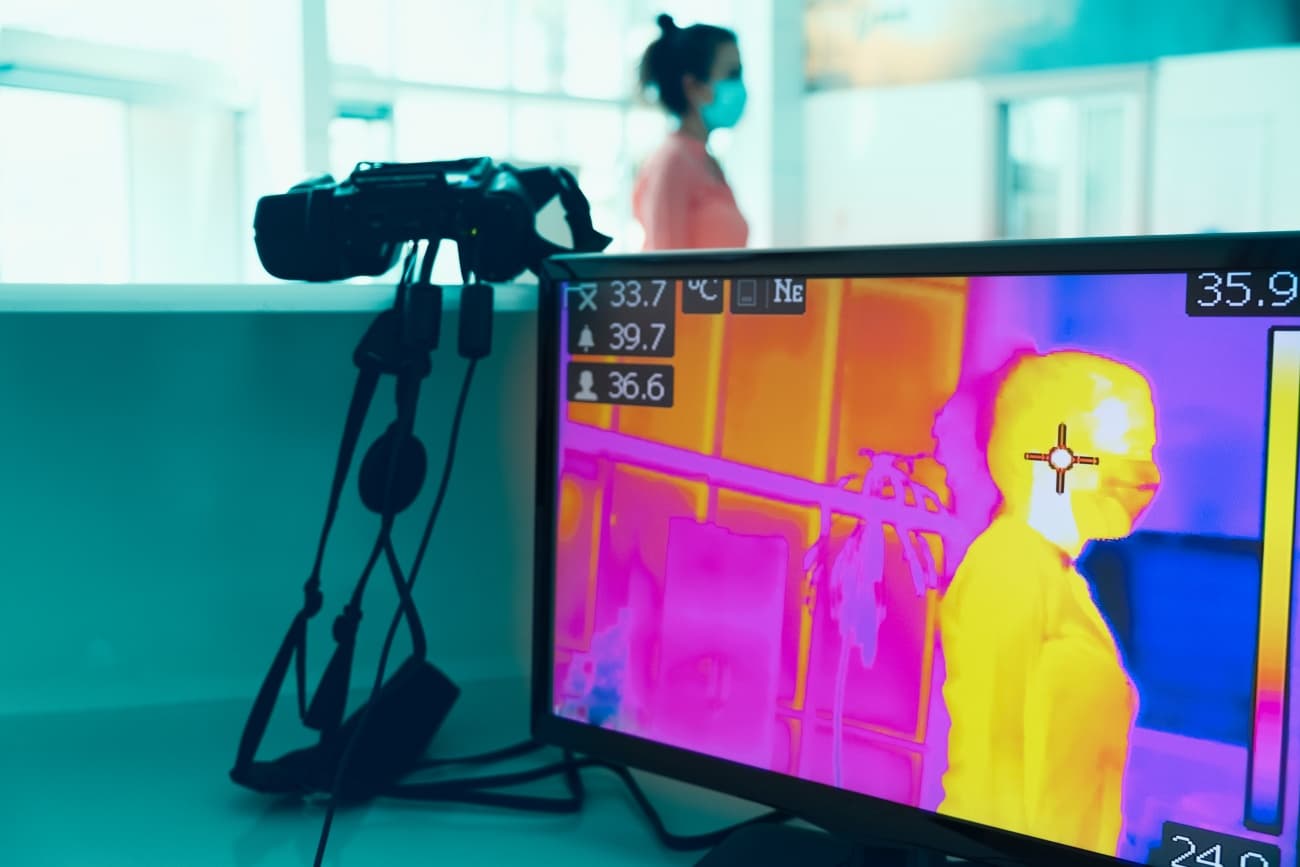As office buildings reopen, managers and tenants are reviewing compliance with Centers for Disease Control and Prevention guidance regarding precautions against COVID-19. The CDC recommends employers “consider conducting daily in-person or virtual health checks (e.g., symptoms and/or temperature screening) of employees before they enter the work site.” Concern about workplace safety has combined with technology advances to generate interest in thermal imaging systems for offices. The technology measures a person’s surface skin temperature without requiring close physical proximity to another person, according to the Food and Drug Administration.
A new Chicago office building, opened in late summer, is one of the first to incorporate safety advances including thermal scans, according to a recent Forbes article. Fulton East is a multistory office and retail building. Prospective tenants were greatly concerned about “safety and well-being,” developer Bob Wislow, chairman and CEO of Parkside Realty in Chicago, told Forbes. That led to changes in the structure and design.
Some of the biggest real estate owners and developers in the U.S. are evaluating thermal imaging and other solutions across their portfolios, says James Scott, IREM innovator in residence and lead researcher for the MIT Real Estate Innovation Lab. The U.S. Equal Employment Opportunity Commission has offered criteria in weighing an investment in thermal imaging technology:
Potential for integration: “Try to find a system that can integrate into other systems—turnstiles, access systems, control systems, and intrusion devices,” Scott says. “You want to allow for the quickest flow of people while creating the safest, most efficient system.” It makes sense to invest in something that can be used in conjunction with other systems to create long-term benefits, he adds. “You don’t want something that will go into your storage and gather dust when this pandemic is over.”
Confidentiality: The EEOC allows employers to measure employees’ temperatures as long as confidentiality is observed. The commission’s website says, “As with all medical information, the fact that an employee had a fever or other symptoms would be subject to ADA [Americans with Disabilities Act] confidentiality requirements,” Scott says.
Your environment: “Demonstrations of the product might be in a closed environment with only one or two people,” Scott says. “You have to make sure the thermal imaging works in your specific property environment as well. Certain parameters are necessary to ensure the temperature readings are as accurate as possible.
“Also, it’s important to understand whether the technology will work for the volume of people coming through the lobby,” he continues. “You can’t just scan a group of people. You need a certain amount of time between readings for the system to recalibrate and sanitize.”
Training and setup: Creating the right environment and a safe traffic flow requires a significant amount of training and a thoughtful setup, Scott notes.
Adding a thermal imaging system requires due diligence. Doing research and taking an objective look at the pros and cons are starting points.









